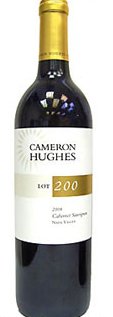This dish is looking into a bit of history on Japanese "Western" dishes. This dish may look like "
Tonkatsu" トンカツ but this is the predecessor of Japanese tonkatsu and called "poku katsuretsu"
ポークカツレツ and it is closer to Western "
cutlet" than tonkatsu. ("katsu" in "ton-katsu" is a short for "katsuretsu" but you do not say "tonkatsuretsu" to mean "tonkatsu"). When a famous and pioneering yoshoku restaurant, "Renga tei"
煉瓦亭 in Ginza, opened in 1895 (it is still in business today), started serving Western cuisine to Japanese, they had to make some modifications to the original Western dish to accommodate Japanese taste. These variation reportedly formed the basis of Japanese "yoshoku". For example, instead of sautéing breaded thin pieces of meat in a small amount of oil or butter in a frying pan as Western cutlets are usually prepared, they deep dried them as though making tempura (another foreign derived Japanese dish which was introduced to Japan from Portugal much earlier). They also used pork instead of veal for this dish. This eventually became tonkatsu トンカツ using pork fillets or chops rather than thinly pounded meat.
I used a pork fillet cut into small medallions (1 inch thick) and then pounded very thin. I also used some end pieces and trimmings of pork fillets (this time I used mostly trimmings). I breaded them in the standard way; seasoned with salt and pepper, dredged in flour, dipped in egg water and coated with Panko bread crumbs (left upper in the image below). I used a small amount of light olive oil (less than quarter of an inch deep) on medium low flame as seen in the right upper of the image below. After a few minutes, I turned them over and fried the the other sides until browned and the meat was done (few more minutes, left lower image below) and drain excess oil (right lower image below).
I served this with
Pennsylvania Dutch noodles and steamed broccoli. On the side I put, Japanese hot mustard and tonkatsu sauce. Because the breading/meat ratio is different from tonkatsu, this tastes different from tonkatsu. It is dominated by the crispy crust and is very good in its own right. Leftovers make a mighty fine sandwich particularly if the mustard/tonkatsu sauce is used on the bread.

We had this with a decent Napa Cab from wine reseller
Cameron Hughes wine called "lot 200". Cameron Hughes supposedly buys excess "juice" from "famous", "big-name" wine makers (mostly Napa) and bottles it under his label with a simple designation of a "lot number". We first tried CH wines after reading a
WSJ article. The idea is that the original big name wineries get cash they needed but do not ruin their reputations by fire sales of their wines. We consumers get a good deal and CH makes money in the process. So everybody wins. We tried a few CH wines and most of them are decent and worth the price. This lot 200 is one of the higher priced CH wines and is a classic Napa Cab with a medium body. Not quite a high-end Napa but a very pleasant wine. Only problem with CH wines is, when you find something you like, you can never go back and buy the same wine again.

No comments:
Post a Comment